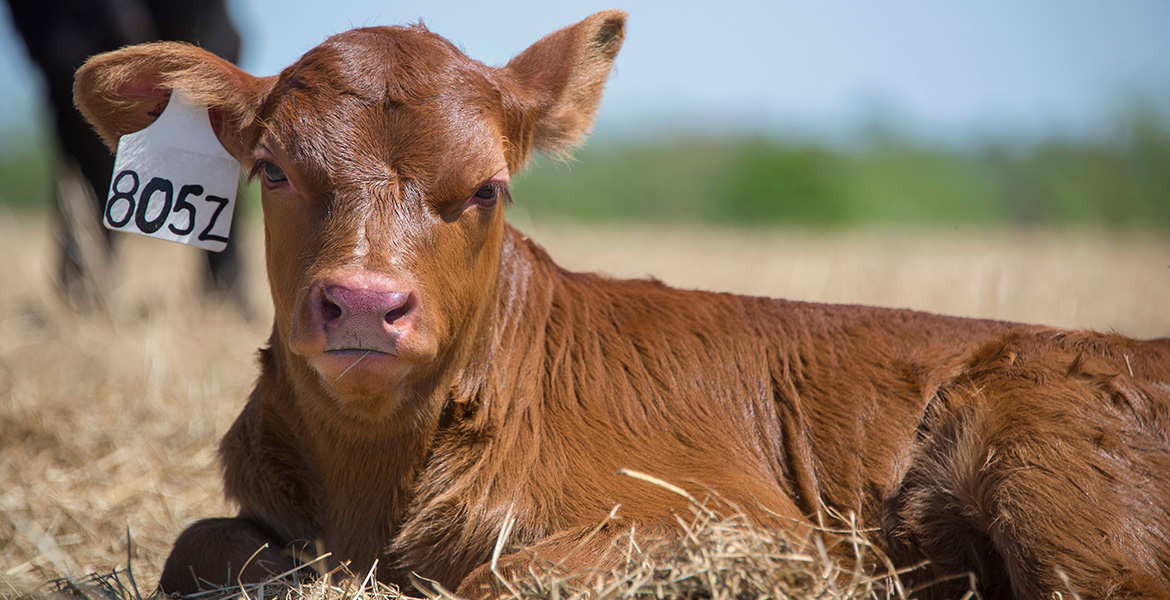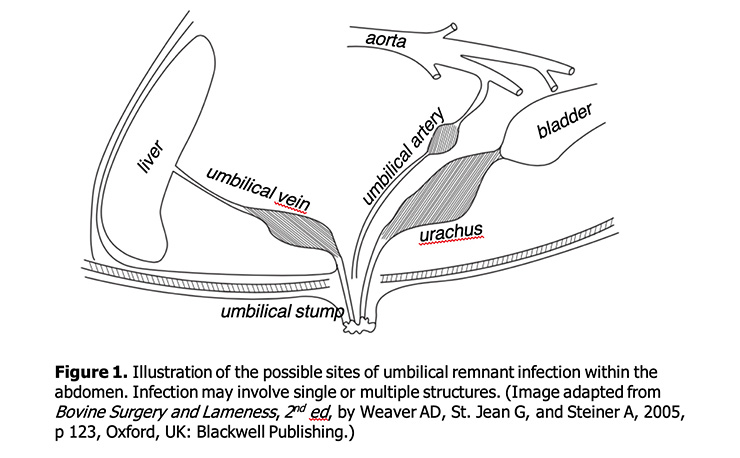
Navel ill: A conundrum of calf belly button bumps
Tuesday, June 23, 2020
Umbilical swellings in calves present a common problem for cattle owners. When that swelling is due to infection, it may have economic repercussions. Navel ill is the common term for inflammation or infection of the umbilicus of calves.
What is the umbilicus?
The umbilicus is the external remnant of the umbilical cord, which is made up of two umbilical arteries — an umbilical vein and the urachus. These structures supply the fetus with oxygen- and nutrient-rich blood from the placenta, and they remove urine waste. In the neonatal calf, these structures regress to become remnants after birth. (Infection within these umbilical remnants is depicted in Figure 1).

How does navel ill start and what can happen?
Infections can get inside the umbilicus in the newborn, where it may localize at that site (omphalitis) or track up the umbilical remnants to cause infection elsewhere in the body. Calves with a localized umbilical infection are usually two to five days old and may have swelling and/or discharge at the umbilicus.
The urachus, which is connected to the bladder from the umbilicus to allow removal of urine waste from the unborn fetus and normally shrinks away after birth, is most commonly involved in these type of infections in calves. As a consequence of the infection (called urachitis), calves may be unable to completely empty their bladder, increasing the risk of urinary tract infections.
The infection of the umbilical vein is known as omphalophlebitis. This infection is usually detected in calves one to three months old and may be accompanied by mild fever, lethargy and failure to thrive. The infection may be localized along the umbilical vein or can extend to the liver, since it is attached to the liver.
Navel ill can result in bacteria entering the bloodstream and settling out in small blood vessels elsewhere in the body such as lungs, bones, joints, or brain causing an infection. Calves with navel ill are often depressed and uninterested in nursing. Older calves may show lameness resulting from infection of the growth plates of long bones.
What can you do?
There are many simple ways producers can help prevent navel ill. These include making sure mother cows receive appropriate vaccinations to help boost their immunity that can be transferred to calves; ensuring calves receive adequate amounts of good quality colostrum; and ensuring pastures destined for calving are clean and dry. Calves born in assisted deliveries may be at increased risk for the development of navel ill. Dipping their navels in a 50:50 mixture of 70 percent ethanol and chlorhexidine solution may help prevent it. Finally, producers should closely monitor newborn calves for increased time spent laying down, failing to nurse or general malaise. If umbilical swellings are detected, lancing these at home is not recommended, as sometimes this may result in inadvertent entry into the abdominal cavity. Should a calf be identified with an umbilical swelling, it is important to intervene early and seek the advice of your local veterinarian.
STORY BY: Natasha Williams, DVM, a food animal medicine and surgery resident in the Department of Veterinary Clinical Sciences at the Oklahoma State University College of Veterinary Medicine. Originally from Adelaide, Australia, she earned her DVM degree from the University of Melbourne.
